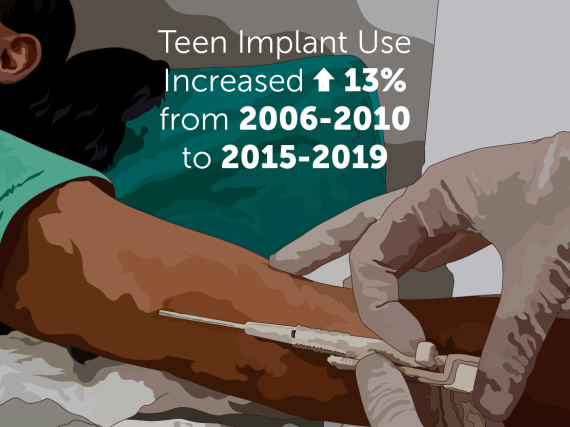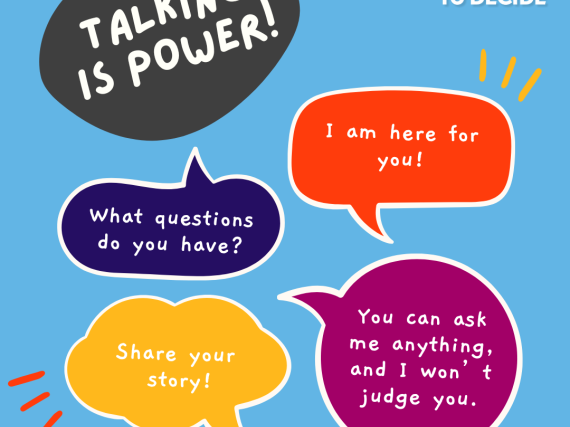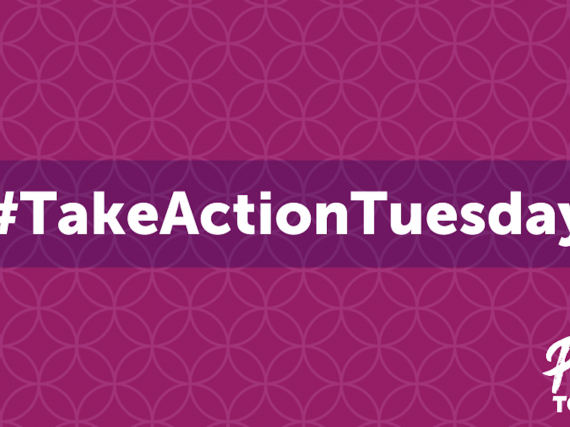Why Sex Education Matters
In 2014, a study found that 93% of parents supported having sex education in middle school and 96% supported teaching sex ed in high school. A 2017 study again found that 93% of parents favored sexuality education in schools. These are not isolated results; decades of research support the benefits of comprehensive, inclusive sex education.
Comprehensive sexuality education is also supported by professional organizations such as the American Medical Association, the American Academy of Pediatrics, the Society for Adolescent Health and Medicine, and the 184 organizations—including Power to Decide—who joined in coalition in May 2020 to support the Sex Ed for All movement.
At the moment, 28 states (and DC) require some kind of sex education and HIV education and seven states only require HIV education. However, only 17 require that education to be medically accurate and 29 states require schools to stress abstinence. Because sex education in schools is legislated on the state (or individual school district) level, not the federal, the quality of what is taught varies widely across the country. The CDC’s 2018 School Health Profiles found that only 43% of high schools and 18% of middle schools taught ‘key’ topics in sex education. Some of the topics the CDC labels as ‘key’ include information on how to prevent STIs and unplanned pregnancy, maintaining healthy relationships, avoiding peer pressure, and using appropriate health services.
The World Health Organization notes that the focus of sexuality education in Europe has shifted from preventing pregnancy in the 1960’s to preventing HIV in the ‘80’s to today covering these topics alongside such issues as sexism, homophobia, and online bullying gender norms, the sexuality spectrum, and emotional development. In contrast, a 2018 study reported that students in the US were less likely to receive sex education on key topics in 2015-2019 than they were in 1995. The same study found that only 43% of females and 47% of males who had penis-in-vagina sex covered safe sex in school before they engaged in sex for the first time.
Truly comprehensive sex education includes, but isn't limited to:
- Taught by trained sex educators.
- Begun early and progresses at an age-appropriate pace.
- Evidence-based.
- Inclusive of LGBTQ young people.
- Explicitly anti-racist.
- Learner-centered.
- Community-specific.
Sex ed that is for everyone includes (but isn't limited to) information about:
- Consent.
- Healthy relationships.
- Anatomy and physiology.
- Adolescent sexual development.
- Gender identity and expression.
- Sexual orientation and identity.
- The full range of birth control methods and pregnancy options.
All young people have a right to this kind of high-quality, evidence-based information and care to ensure their lifelong sexual and reproductive health. Again, and again, and again both national and international research has found that young people who have experienced comprehensive sexuality education delay having sex for the first time, are less likely to engage in risky behavior, and are more likely to use birth control.
Plus, beyond giving young people facts, inclusive sex ed provides skills such as effective communication, active listening, and the ability to make informed decisions that will help them to grow and live safe, healthy, and fulfilling lives.



